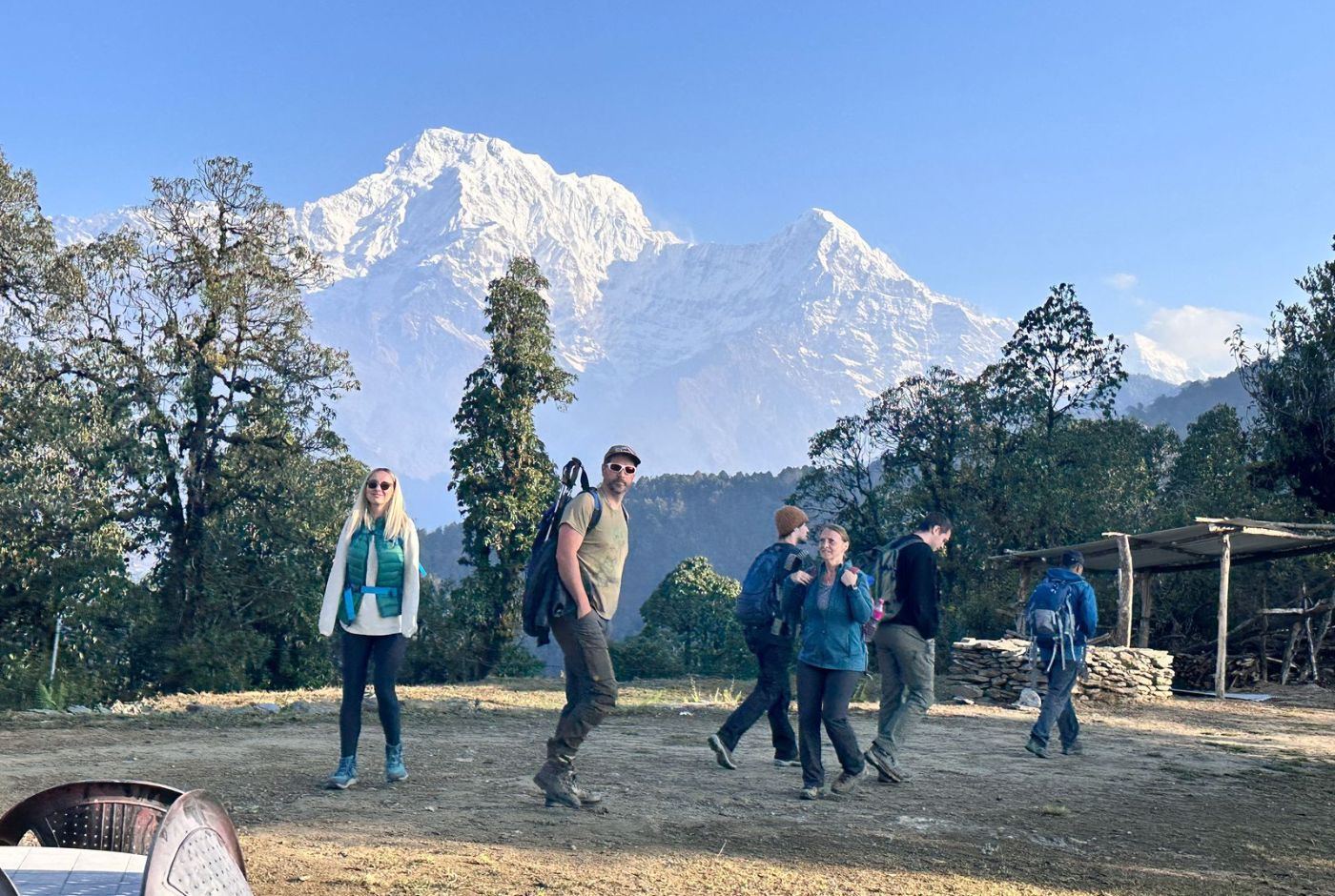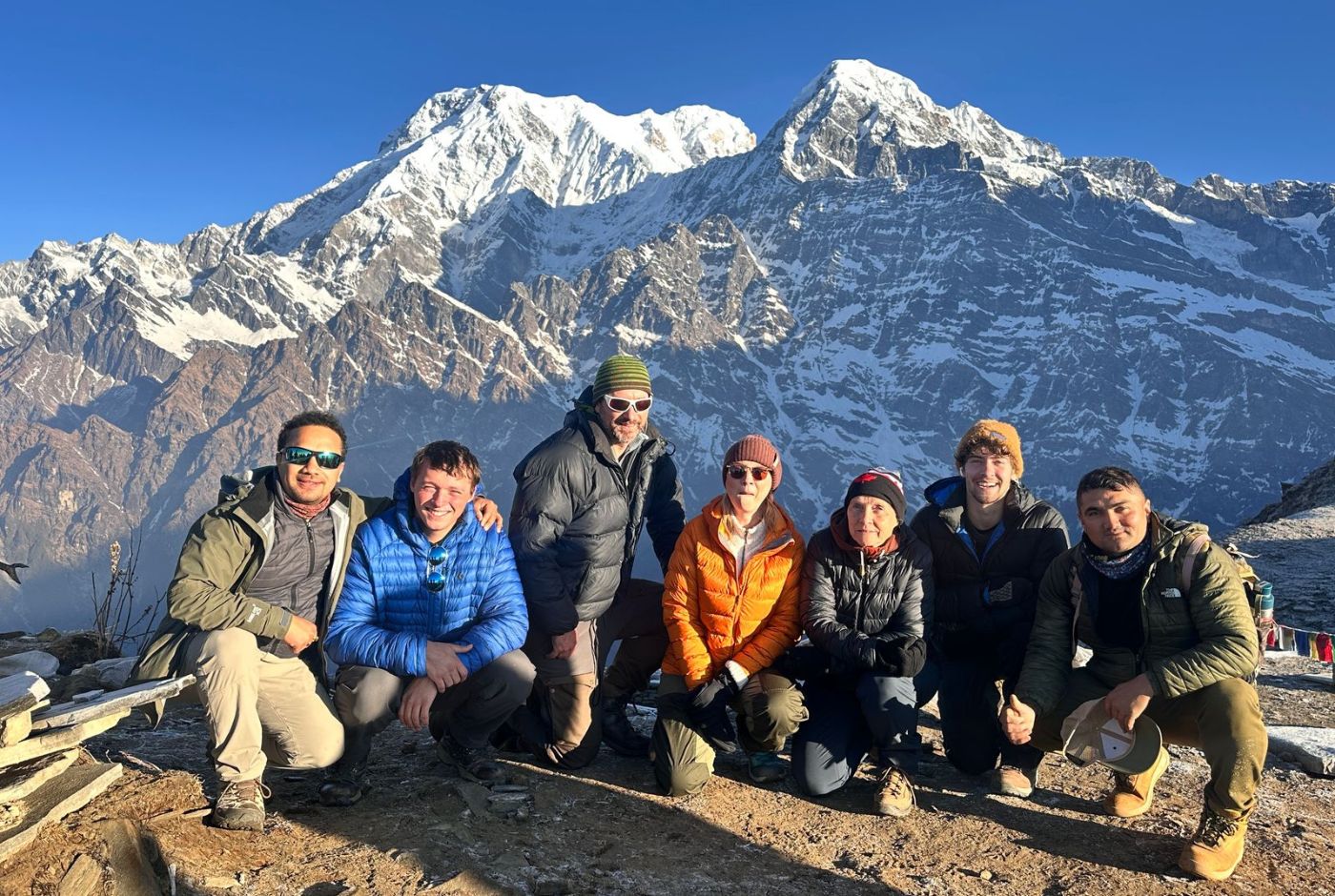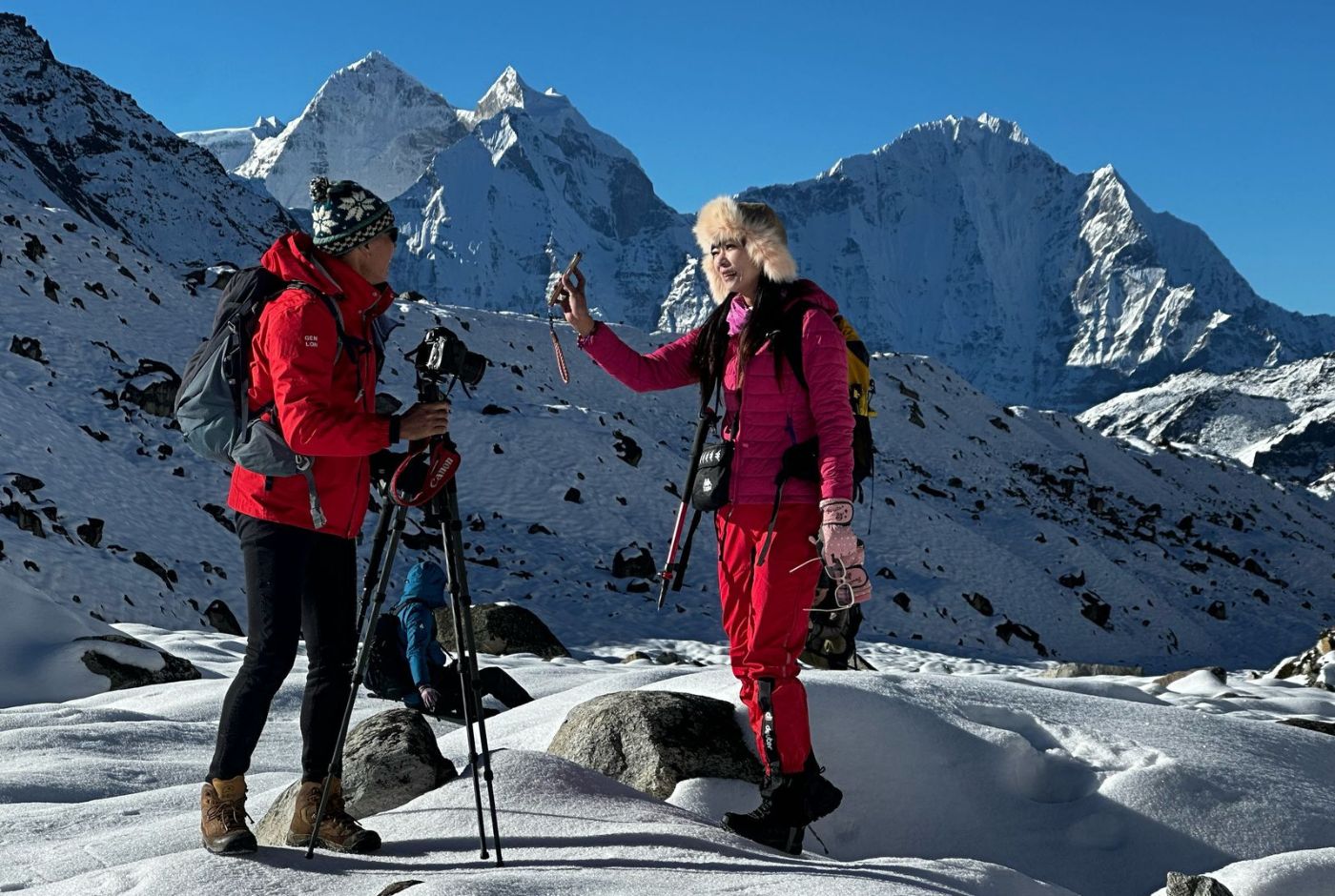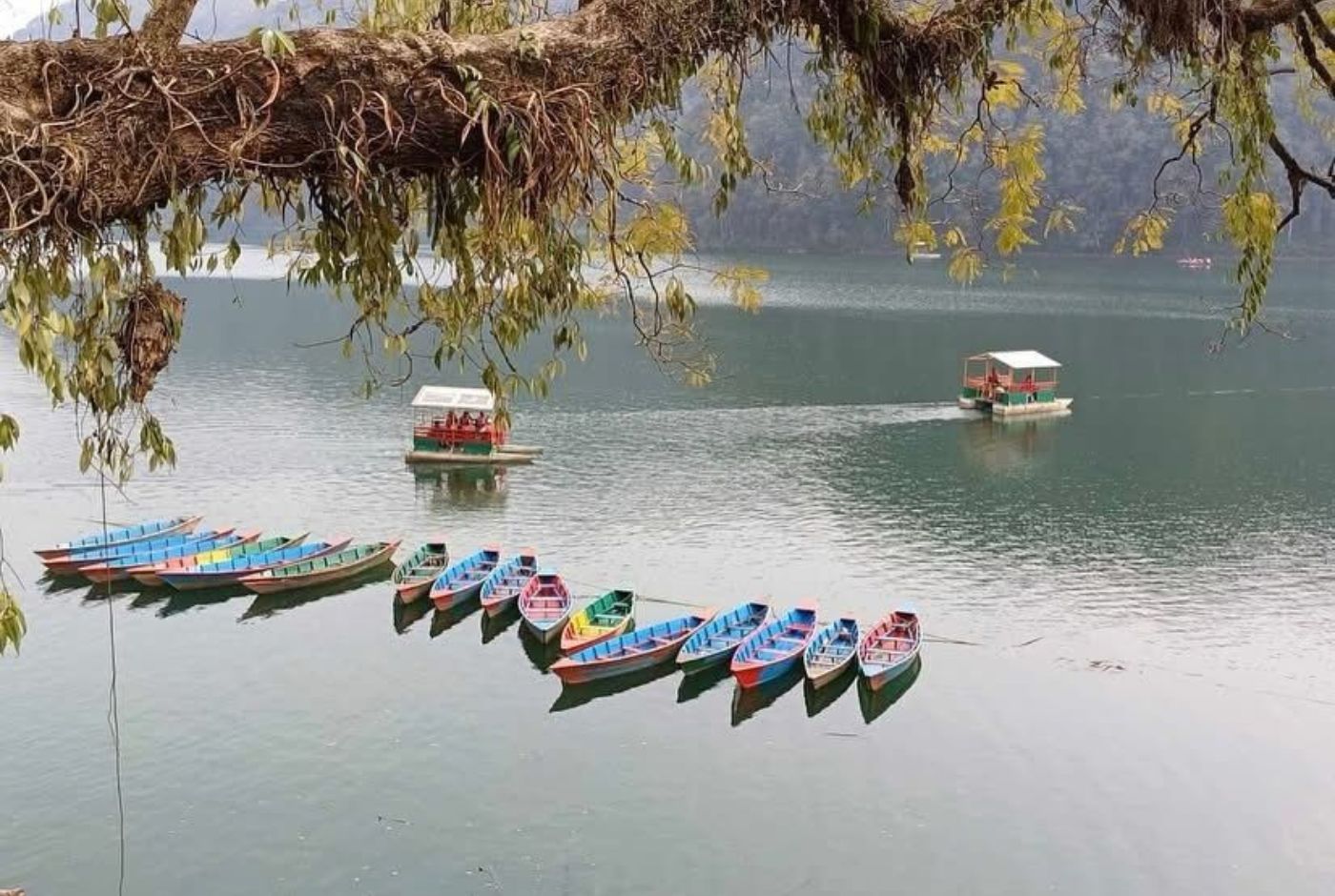Nepal, a nation famous for its grand Himalayas and dynamic culture, draws in trekkers and mountain climbers worldwide. Domestic to the world’s most noteworthy crests, including Mount Everest, Annapurna, and Kanchenjunga, Nepal offers an unmatched trekking experience for travelers. Be that as it may, one of the most basic components to consider when setting out on a journey in Nepal is choosing the right time to go. The climate and trekking conditions can affect your journey's success and satisfaction.
In this article, we will investigate the best times for trekking in Nepal, centering on the seasons, climate conditions, and particular components that influence your experience.
Understanding Nepal’s Seasons
Nepal’s climate can shift depending on the locale and elevation. The climate in the marshes (Terai) is tropical, whereas the conditions in the tall mountains are much colder. Broadly, Nepal encounters four particular seasons:
Spring (March to May)
Summer/Monsoon (June to August)
Autumn (September to November)
Winter (December to February)
Each of these seasons offers interesting conditions, and understanding these contrasts can offer assistance to decide the perfect time for your trek.
Spring: The Perfect Time for Trekking in Nepal (March to May)
Spring, which endures from March to May, is regularly considered the best time for trekking in Nepal. During this season, the climate is ordinarily warm and charming, particularly in the lower and mid-altitudes. The days are sunny, and the evenings are cool, making it ideal for long treks.

Why Spring is Perfect for Trekking:
- Mild Climate: Temperatures are mild, and the climate is generally steady, making it perfect for trekking at different heights. The daytime temperature at lower elevations (e.g., Kathmandu, Pokhara) ranges from 15°C to 25°C, whereas the temperatures in higher elevations can run from -5°C to 10°C, depending on the locale and time of day
- Clear Skies: Spring offers a few of the clearest skies, giving trekkers breathtaking views of the snow-capped crests. The perceivability is fabulous, which is especially imperative for trekkers wanting to see the grand mountains of the Himalayas.
- Flora and Fauna: Spring is the season of blooming rhododendron blossoms, particularly in regions like the Ghorepani Poon Slope and Langtang Valley. The scene is filled with dynamic colors, making the journey indeed more scenic. Popular Treks: Nepal’s most well-known trekking courses, such as the Annapurna Circuit, Everest Base Camp, and Langtang Valley, are at their best during the spring. These courses are available and offer ideal trekking conditions, with clear trails and direct temperatures.
- Festivals and Culture: The spring season coincides with a few critical celebrations in Nepal, such as the Nepali New Year (April) and the Holi Celebration (March), which includes a social aspect to your trekking experience. You can inundate yourself in the neighborhood culture whereas getting a charge out of the characteristic beauty.
Autumn: The Best Time for Trekking (September to November)
Autumn is another peak season for trekking in Nepal, from September to November. This season is as prevalent as spring for trekkers and mountain climbers due to comparable climate conditions and incredible trekking opportunities.

Why Autumn time is Awesome for Trekking:
- Stable Climate: Like spring, Autumn offers a steady and mellow climate, with fewer chances of rain. The temperatures in the lower districts stay warm, whereas higher elevations involve cool temperatures, making it perfect for trekking at different elevations.
- Clear Skies and Great Perceivability: Autumn time is marked by crystal-clear skies, permitting trekkers to appreciate marvelous mountain sees. The diminished sum of cloud cover guarantees that you can fully encounter Nepal’s common beauty.
- Post-Monsoon Clarity: Since Autumn time takes after the monsoon season, the trails and environment are lush and green. The streams are full, and the waterfalls are streaming at their crest. Be that as it may, since it follows the storm, the trails are much cleaner and less sloppy compared to the summer season.
- High Trekking Request: Since Autumn is a prime trekking season, numerous Nepal’s trekking courses are well-facilitated with experienced guides, trekkers, and watchmen. This implies there are a part of individual trekkers, and the path is bustling with action, which can be a propelling factor for some.
- Festivals and Social Involvement: Autumn time is a time when the well known Tihar (Deepawali) and Dashain celebrations are celebrated in Nepal. Trekking at this time can give one-of-a-kind social encounters, as you might have the opportunity to witness the celebrations in towns along your route.
Summer/Monsoon (June to August): Not Perfect for Trekking
While the summer storm season (June to August) may appear like a choice for trekkers looking for a calmer, less swarmed experience, it is not considered perfect for trekking in Nepal. The climate during this period is hot and sticky, with rain from downpours that can significantly influence the trails.
Why Monsoon Season is Challenging:
- Heavy Precipitation: The Monsoon season brings overwhelming precipitation, particularly in the marsh regions and the foothills of the Himalayas. This makes sloppy and elusive trails, which increases the trouble of trekking.
- Risk of Avalanches: Storm downpours moreover increase the chance of avalanches, particularly in zones like the Annapurna Circuit and Langtang Valley. These avalanches can piece trekking courses, making it perilous and unpredictable.
- Cloudy Skies and Destitute Perceivability: The consistent precipitation brings overwhelming cloud cover, diminishing perceivability, and discouraging mountain sees. Trekkers who need to see Nepal’s dazzling scenes may discover this a major downside.
- Hot and Sticky Conditions: The marsh locales of Nepal can end up hot and muggy amid the storm, which can make trekking awkward. The warmth and stickiness can too lead to parchedness and fatigue.
- Although a few higher-altitude trekking courses, such as Everest Base Camp, are less influenced by the storm downpours, trekking amid this season is still not suggested due to the common path conditions.
Winter (December to February): Cold but Conceivable for Experienced Trekkers
Winter (December to February) in Nepal is cold, particularly in the higher elevations, but for those who are well-prepared, it offers a chance to encounter the mountains without the crowds.

PERFECT FOR WINTER FRIENDLY
Why Winter Can Be Challenging:
- Cold Temperatures: The fundamental challenge in winter is the cold, especially in higher elevations. Temperatures can drop to -10°C or lower at higher heights, and a few trekking courses may indeed be secured in snow, making the trails more troublesome to navigate.
- Limited Get to Tall Elevations: A few trekking courses, particularly those in higher elevations (over 4,000 meters), may be blocked off during the winter due to snow and the cold. The Annapurna Circuit and the Langtang Valley journey, for example, can involve noteworthy snowfall.
- Reduced Sunshine: Winter days are shorter, which implies trekkers may have to wrap up their journey earlier than normal. Constrained sunshine can moreover influence the pace of the journey, making it vital to arrange your schedule carefully.
Why Winter Can Be Rewarding:
Fewer Visitors: One of the major preferences of trekking in winter is the lack of visitors. If you incline toward a more single involvement with less swarms, winter can be an idealized time to investigate Nepal’s trekking routes.
Winter View: The snow-covered crests and calm trails give a diverse kind of excellence. If you appreciate peaceful and peaceful involvement, trekking in the winter can be magical.
Conclusion: The Best Time for Trekking in Nepal
Overall, spring (March to May) and Autumn time (September to November) are the best times for trekking in Nepal, advertising mellow climate, clear skies, and stunning mountain sees. Whereas both seasons are perfect for trekking, spring is particularly recommended for those looking for dynamic scenes and ideal climate conditions. Autumn time, despite of the fact that it is somewhat more swarmed, gives comparative advantages.
For trekkers who look for a more challenging involvement or a calmer path, winter can moreover be an extraordinary time, but it requires legitimate planning and an understanding of the cold conditions. On the other hand, the summer Monsoon season ought to for the most part be maintained a strategic distance from due to the dangers posed by overwhelming precipitation, avalanches, and destitute path conditions.
No matter when you choose to journey in Nepal, it’s fundamental to get ready satisfactorily, check the climate conditions, and select a course that suits your inclinations and involvement level.
Best Month to Visit Kathmandu and Pokhara
Nepal, a nation renowned for its wealthy social legacy and shocking natural beauty, has two cities that stand out for travelers: Kathmandu, the bustling capital, and Pokhara, a quiet lakeside town settled in the shadow of the Himalayas. Both cities offer interesting encounters, and understanding the best time to visit them is vital for making the most of your trip. Whereas each month has its own offer, the best time to visit Kathmandu and Pokhara is affected by climate conditions, social occasions, and the sort of experiences you're seeking.
In this article, we will investigate the best months to visit Kathmandu and Pokhara, making a difference when you choose when to arrange your trip.
Kathmandu: The Heart of Nepal
Kathmandu, Nepal's capital and biggest city, serves as the portal for most travelers going by Nepal. It is known for its chronicled sanctuaries, dynamic roads, and a blend of old conventions and present day impacts. The climate in Kathmandu shifts from season to season, which can altogether affect your experience.
Best Months to Visit Kathmandu
October to December (Harvest time Season)
Weather: The harvest time months from October to December are regularly considered the best time to visit Kathmandu. After the storm season, the skies are clear, and the climate is cool and comfortable. Daytime temperatures ordinarily extend from 18°C to 25°C, whereas evenings can be chilly, particularly in November and December, with temperatures dropping to around 5°C to 10°C.
Why Visit: The clear skies during these months offer fabulous visibility of the encompassing mountains, including the Langtang and Annapurna ranges. This is moreover the crest traveler season, meaning the city is enthusiastic and full of events. The dry climate makes it perfect for open-air exercises like touring, climbing, and investigating the various UNESCO World Heritage Sites around Kathmandu.
Festivals: Harvest time is also the season for Nepal’s greatest celebrations, Dashain and Tihar. These social celebrations offer guests a chance to immerse themselves in Nepal’s wealthy conventions. Amid Dashain (ordinarily in September or October) and Tihar (in October or November), Kathmandu is brightened with lights, and different ceremonies and parades take place, making it a special social experience.
March to May (Spring Season)
Weather: Spring is another fabulous time to visit Kathmandu. The climate is, for the most part, gentle, with daytime temperatures extending from 15°C to 25°C. Evenings stay cool but not as cold as the winter months. The stickiness is too, making open-air exercises like strolling around the city and going to sanctuaries and stupas exceptionally comfortable.
Why Visit: Spring is a perfect time for those who need to visit Kathmandu without the winter chill or the overwhelming traveler swarms of harvest time. The scene begins to blossom with colorful rhododendrons and other blossoms, improving the excellence of the city. Furthermore, the climate is culminated for investigating the social locales, such as Swayambhunath (Monkey Sanctuary), Boudhanath Stupa, and Pashupatinath Temple.
Festivals: The Nepali New Year as a rule, falls in April, and even though it is not as fantastic as Dashain or Tihar, it is still an imperative time for local people to celebrate with family social occasions and extraordinary supplications. The dynamic air at this time can be a captivating encounter for travelers.
June to September (Storm Season)
Weather: The rainstorm season in Kathmandu starts in June and continues until September. During these months, Kathmandu encounters overwhelming precipitation, tall stickiness, and intermittent avalanches, especially in the surrounding sloping areas.
Why Visit: Whereas the storm season is not perfect for open-air exercises, it may be the culminating time for travelers looking to maintain a strategic distance from swarms and appreciate the city’s social offerings in a calmer setting. If you're arranging to remain inside and investigate exhibition halls, cafes, and indoor sanctuaries, the rainstorm months may suit you. Be that as it may, anticipate the discussion to be muggy, and a few of the streets might be muddy.
Festivals: Rainstorm season regularly covers the Rath Yatra (chariot celebration) in the Kathmandu Valley, especially in places like the old town of Patan. This devout celebration includes enormous parades, which can be an awesome social involvement for those interested in Nepal’s Hindu traditions.
Pokhara: A Peaceful Lakeside Retreat
Pokhara is frequently considered the most lovely city in Nepal, advertising a quiet climate and dazzling views of the Himalayas. It’s a prevalent goal for trekkers, nature lovers, significant others, and those looking for a more laid-back encounter compared to the bustling Kathmandu.

Best Months to Visit Pokhara
October to December (Harvest time Season)
Weather: Fair like Kathmandu, the harvest time months (October to December) are the best time to visit Pokhara. The climate is gentle and dry, with temperatures extending from 15°C to 25°C amid the day and cooler temperatures at night. The clear skies and fresh views offer breathtaking views of the Annapurna, Machapuchare, and other encompassing peaks.
Why Visit: Pokhara is known for its open-air exercises, including kayaking on Phewa Lake, paragliding, and trekking to adjacent goals like Sarangkot and the Annapurna Circuit. The harvest time season culminates in the climate conditions for these exercises. The dry trails are moreover perfect for trekkers looking to investigate the adjacent slopes and valleys.
Festivals: Whereas Dashain and Tihar are imperative celebrations in Kathmandu, Pokhara moreover sees dynamic celebrations, with local people gathering at the lakeside for family occasions, devout ceremonies, and social performances.
March to May (Spring Season)
Weather: Spring is another phenomenal time to visit Pokhara. Daytime temperatures are comfortable, extending from 18°C to 28°C, whereas nighttimes are cooler, making it reasonable for both open-air investigation and relaxation.
Why Visit: In spring, Pokhara is lavish and green, with blossoming flowers including the characteristic magnificence of the zone. This season culminates with open-air exercises like trekking, paragliding, and exploring the lakeside. The perceivability of the snow-capped mountains is great, giving pleasant views all through the region.
Festivals: The Holi Celebration (Walk) is celebrated with much excitement in Pokhara, with local people and visitors alike taking part in color-throwing celebrations. This is an enthusiastic and fun time to visit if you’re looking for a merry atmosphere.
June to September (Rainstorm Season)
Weather: Like Kathmandu, Pokhara encounters overwhelming downpours amid the storm season, particularly from June to September. The climate can be muggy, and there is a higher chance of trekking courses getting to be dangerous and troublesome to navigate.
Why Visit: If you're looking for a calmer encounter and are not bothered by the rain, the storm season seems to be perfect for you. Whereas trekking conditions may not be ideal, Pokhara’s lakes and surrounding zones are less swarmed, permitting you to appreciate a more serene retreat.
Festivals: The Rath Yatra celebration in the rainstorm season is still celebrated in Pokhara, giving a chance to witness the chariot processions.
Conclusion
Both Kathmandu and Pokhara offer different encounters depending on the season you select to visit. In any case, October to December is broadly considered the best time to visit both cities. The climate is mellow, the skies are clear, and open-air exercises like touring, trekking, and paragliding are ideal.
If you incline toward fewer swarms and do not mind a somewhat hotter climate, walking to May (spring) is moreover an awesome time to visit. On the other hand, whereas June to September (storm) may not be perfect for trekking, it can offer a calmer encounter for those interested in social exploration.
Regardless of when you visit, both cities guarantee an enchanted encounter filled with dynamic culture, dazzling scenes, and warm neighborliness.





